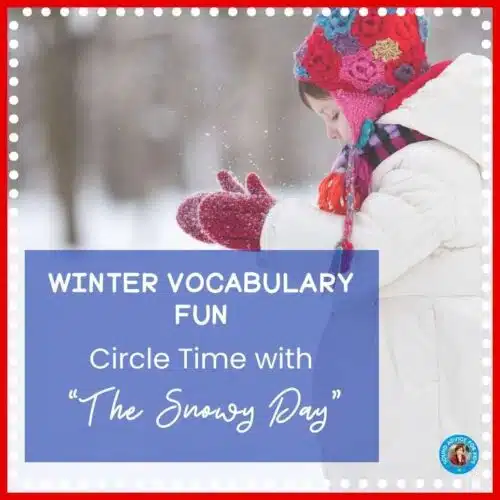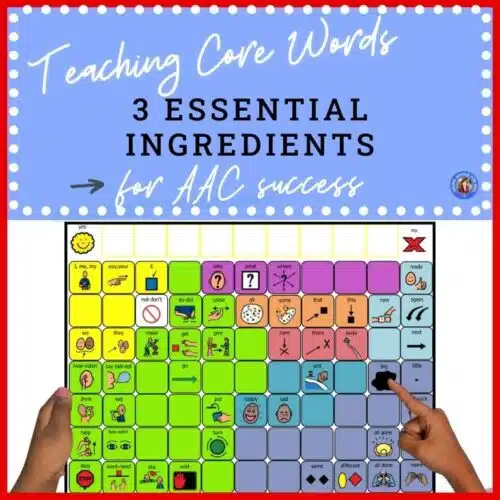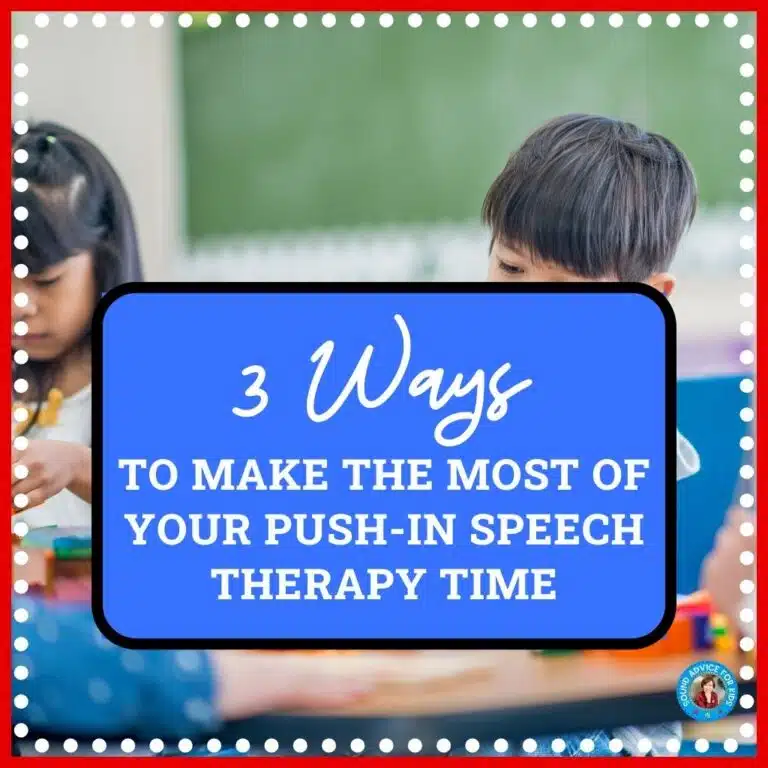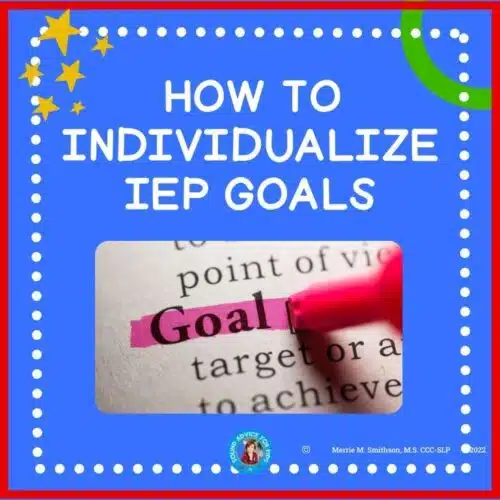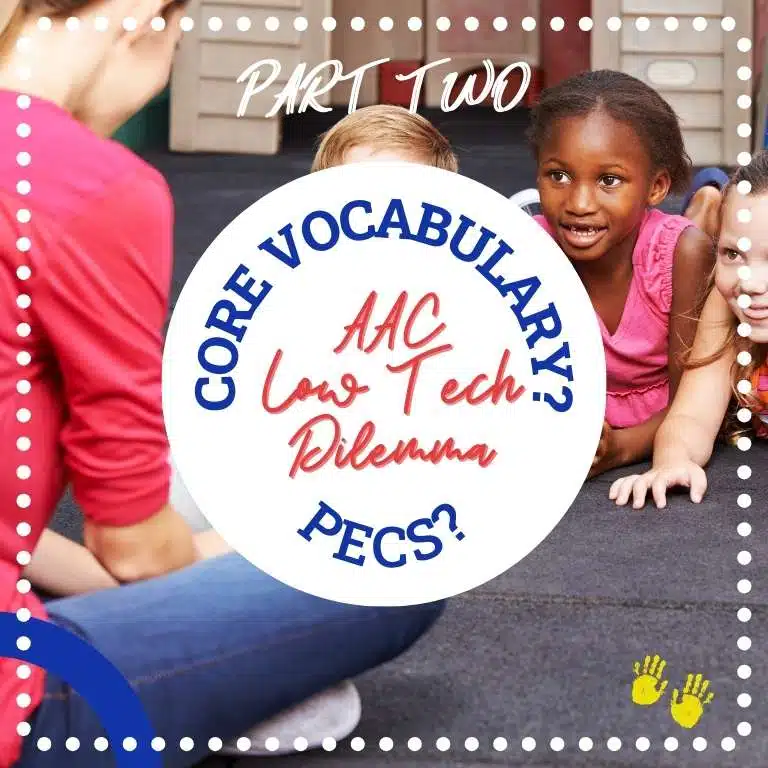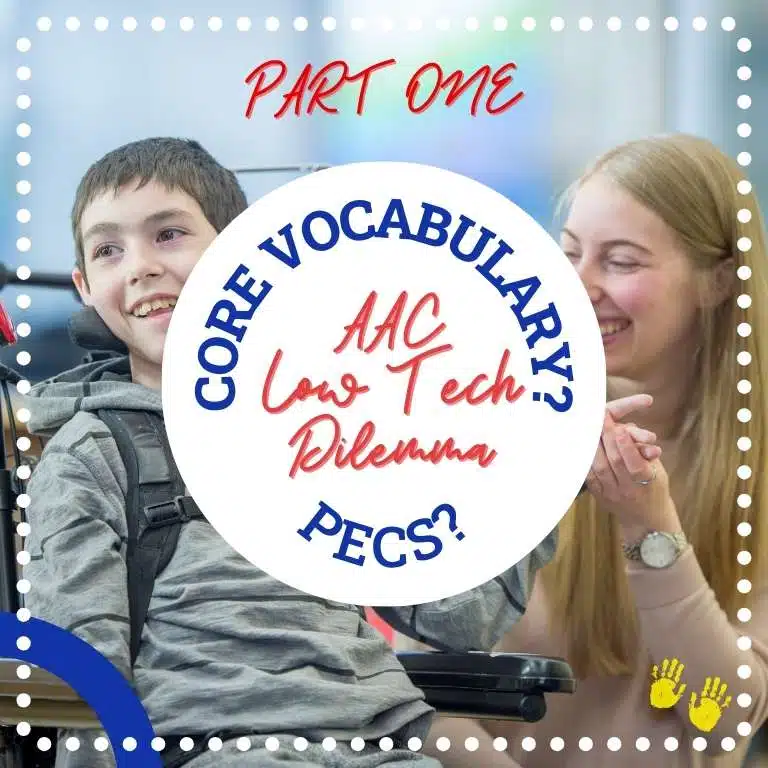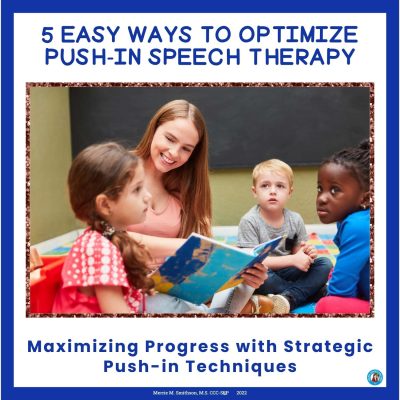Most of us are smack dab in the middle of winter. With chilly temperatures and snow-covered lawns, it’s the perfect time to explore a winter-themed book during your push-in speech therapy circle time. One of my favorites at this time of year is the book “The Snowy Day” by Ezra Jack Keats. Let’s use it to promote vocabulary development and embark on a snow-filled adventure with your students!

The Snowy Day by Ezra Jack Keats is a beloved children’s book that captures the joy and wonder of a winter day. The story follows Peter as he explores his neighborhood transformed by a fresh snowfall. This book offers ample opportunities for vocabulary growth and language enrichment through simple text and beautiful illustrations.
Make Vocabulary Come Alive: When I’m in the classroom, I like to make vocabulary the focus of circle time. We explore new words and language skills while keeping the fun factor intact. Here’s a plan to make it happen:
1. Get Ready
Select the vocabulary words you want to target during your winter theme. Ideas for the words can come from the book or common winter topics. Your words will vary depending on your students’ stage of language development. For example, for students with limited language skills, you might select:
- Winter clothing items like hat, scarf, coat, gloves, mittens, or boots
- Winter activities like sledding, skating, or skiing
- Winter equipment like: snow shovel, snowblower or snowplow
For students with better language skills, you might target these vocabulary words:
- Seasonal terms like winter and summer
- Winter weather like frozen, cold, chilly, blizzard, or ice
- Animals that hibernate like bears, raccoons, or skunks
- Animals that live in cold climates like penguins, walruses or polar bears
In addition, there are several possible vocabulary words from The Snowy Day itself like: tracks, snowman, snow angel, adventure, socks, pocket, wet, dry, melt, smack, mountain-climber, slide, wet, dry, melt or empty
2. Set the Scene at the Beginning of Circle Time
Before you dive into the story, chat about all things winter and snow. Ask your students about their favorite snowy day activities or what they think the main character, Peter, might discover during his snowy escapades. Questions might include:
- What time of year is it when it’s very cold, it gets dark early, and it snows?
- What do you like to do in the winter?
- What do you like to do on a snowy day?
- What kind of clothes would you wear to play outside in the snow?
Show your students the cover of the book and point to the boy. I like to say something like this: “This boy’s name is Peter. He is going to go outside to have an adventure in the snow.” Then ask:
- What does “adventure” mean?
- What do you think Peter might discover during his snowy adventure?
- How do you think Peter will feel at the end of the day?
This helps activate prior knowledge and build anticipation. It’s a great way to kickstart your students’ imaginations!
3. Unwrap the Book

Now comes the best part—reading the book aloud! Use a Big Book if possible so all the children will see the details of the book easily. If you don’t have a large version, ask your school librarian or check with your local library. You can also check for a read-aloud version on Youtube.com. If you don’t like the narrator, turn off the sound so you can use your voice to emphasize the parts you feel are important. As you go through the story, take pauses when you come across any of your target vocabulary words. Encourage the kids to repeat those words and chat about their meanings. This makes language learning an interactive experience!
Using pauses and verbal cues to focus on the target word “adventure.”
4. Don’t Forget the Visuals
To make those vocabulary connections stick, bring some visuals into the mix. Show pictures, or even better, objects, such as snowflakes, snow shovel, winter clothing, a long stick, wet socks, or any other object mentioned in the book. Displaying these visuals during circle time will help reinforce the vocabulary and make the story even more engaging.
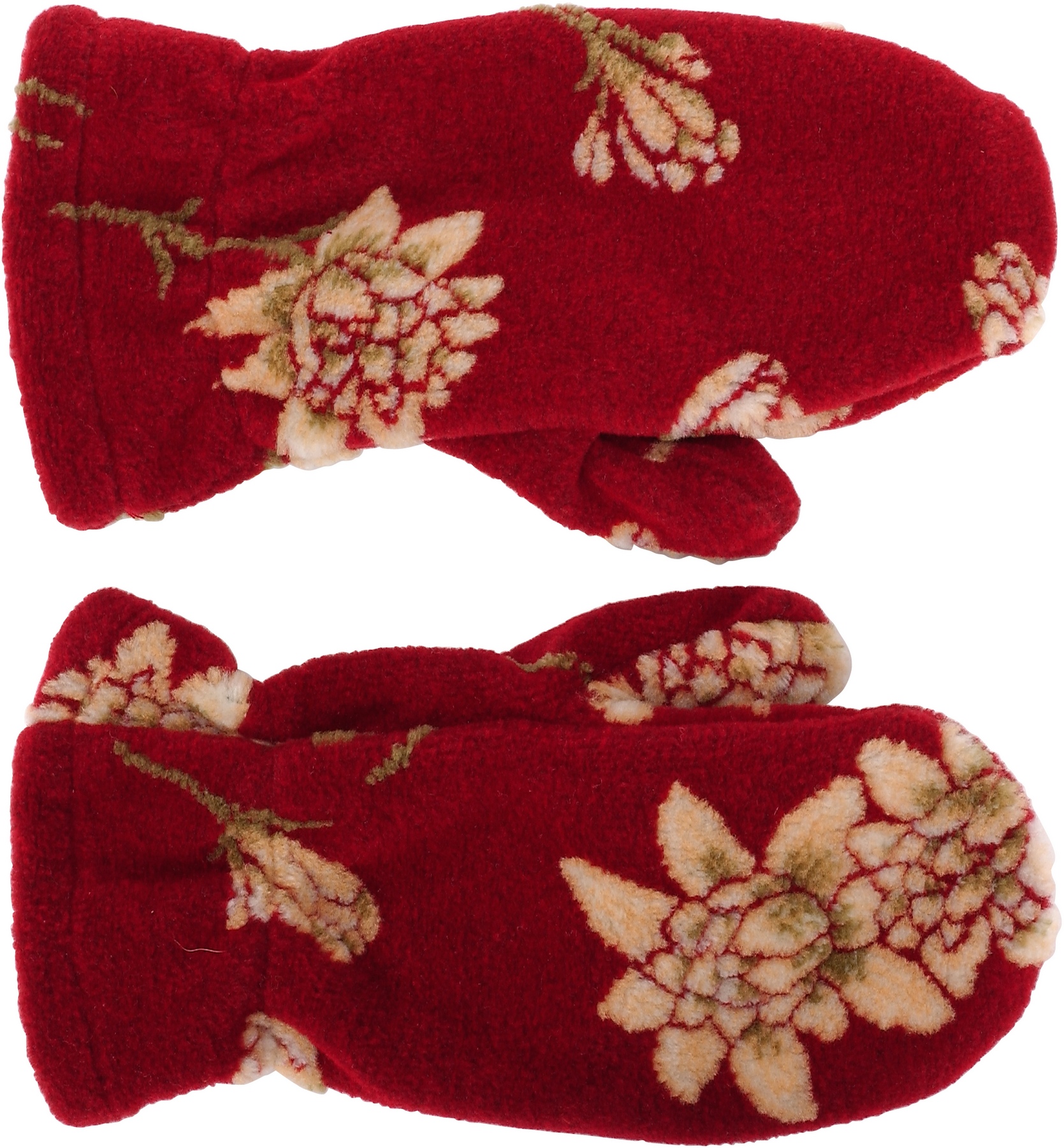


5. Get Active During Circle Time
Who says circle time can’t be a little active? As I go through the story, I stop frequently along the way to act out scenes in the story, For example, we pretend to:
- Eat breakfast
- Put on our coats, boots, scarf, hats, and mittens
- Stand up and walk with our toes pointing out and then with our toes pointing in
- Drag our feet slowly to make imaginary tracks.
- Smack a tree with a stick and put our hands on our heads when the snow falls from the tree.
- Build an imaginary snowman and
- Make snow angels on the floor
- Have a snowball fight with rolled together pairs of socks for snowballs
You get the idea. By physically acting out the story, your students will cement the story and the vocabulary into their long-term memories while using their imagination and having fun!
6. Take it further
Let the fun extend beyond the book by incorporating winter-themed activities into the daily schedule. As you plan with your collaborative teacher, consider ways to extend the learning beyond circle time, such as:
- Hiding objects from the story or everyday winter activities in a sensory bin with fake snow.
- Encouraging students to describe the textures, sizes, and colors they encounter in the sensory bin, fostering further vocabulary development and sensory awareness.
- Letting students explore wet versus dry socks or discovering what happens when something frozen melts on a piece of clothing.
- Sorting winter and summer clothing into appropriate piles
- Separating pictures of winter activities from summer activities.
- Drawing pictures of their own winter adventures
I bet you and your teachers can come up with tons of ideas when you put your heads together!
To really make an impact, re-read the story 3-4 times throughout your winter unit. By the end, you’ll be amazed at how well your students remember the story and have retained their new vocabulary.
I hope these ideas heat up your circle time and help your students build their winter vocabulary and make progress on their speech therapy goals . Stay warm and let the magic of “The Snowy Day” inspire you and your students during this chilly season!

